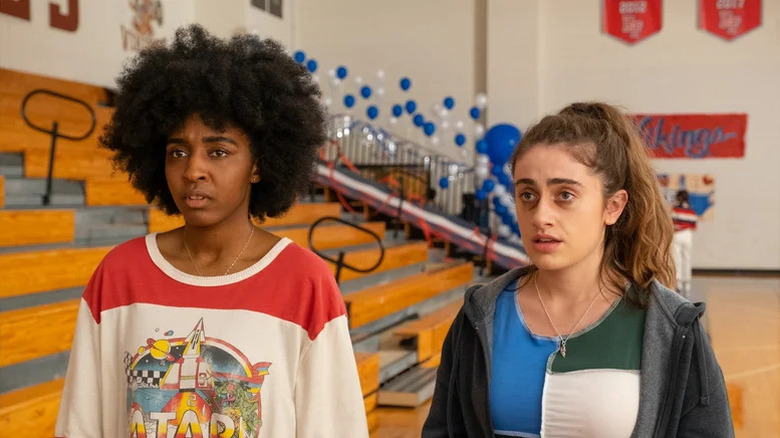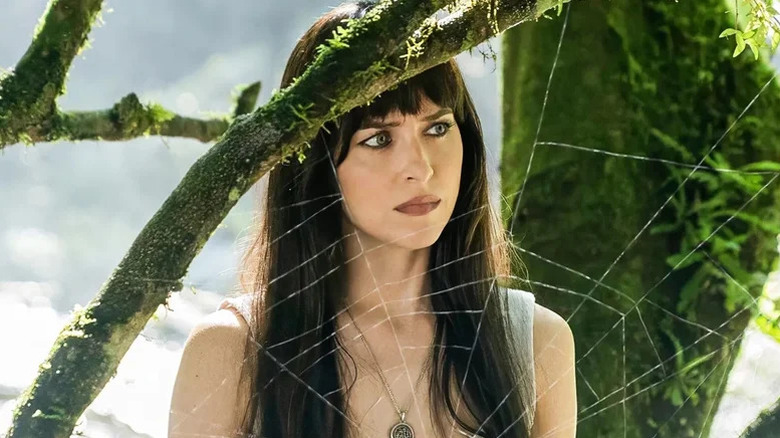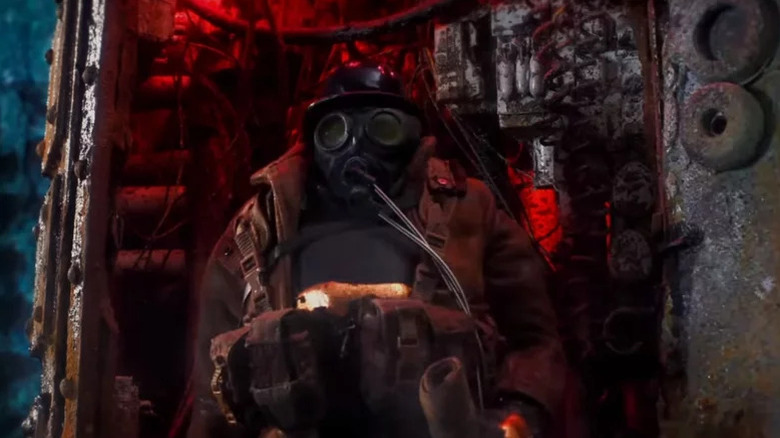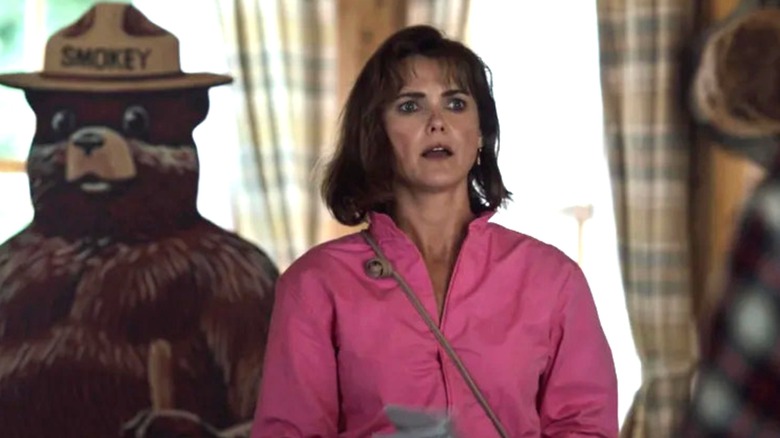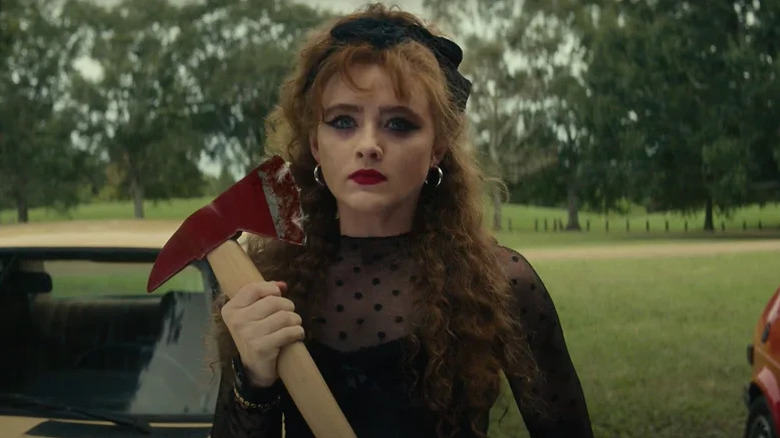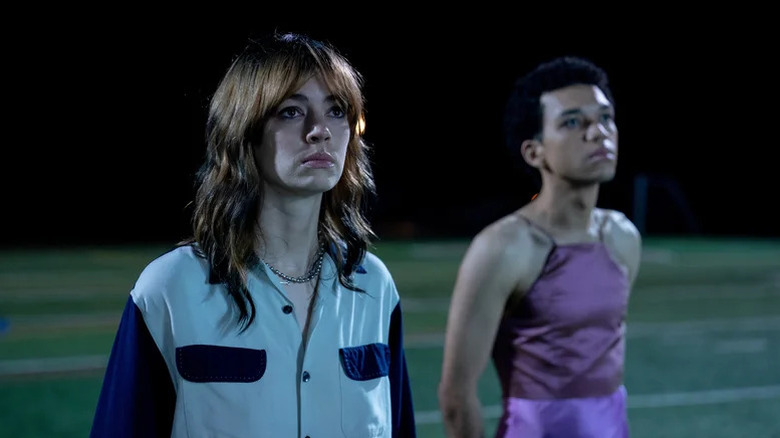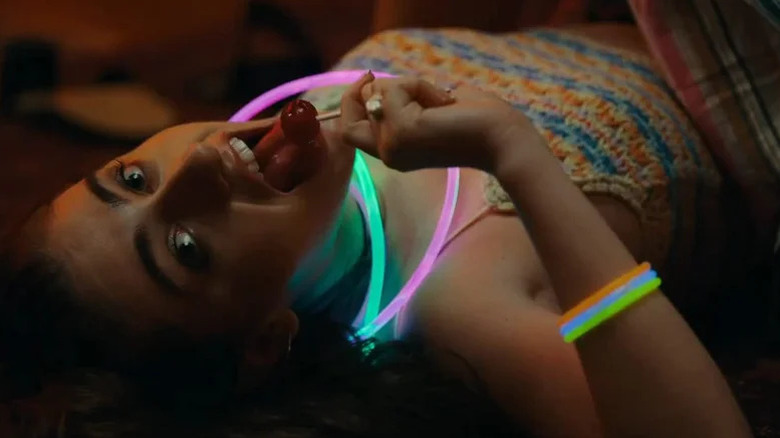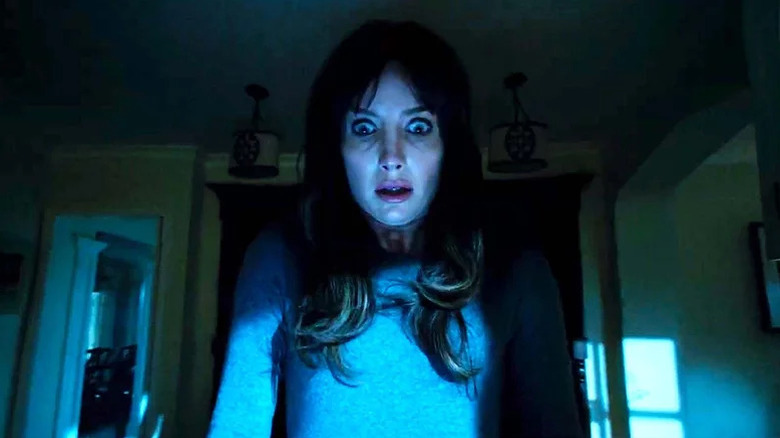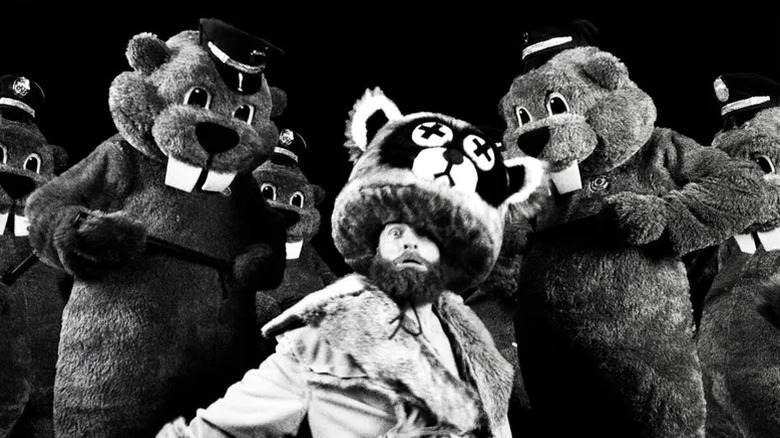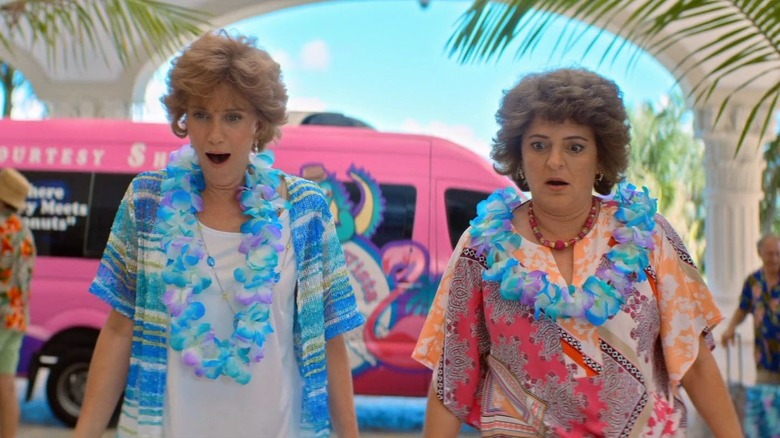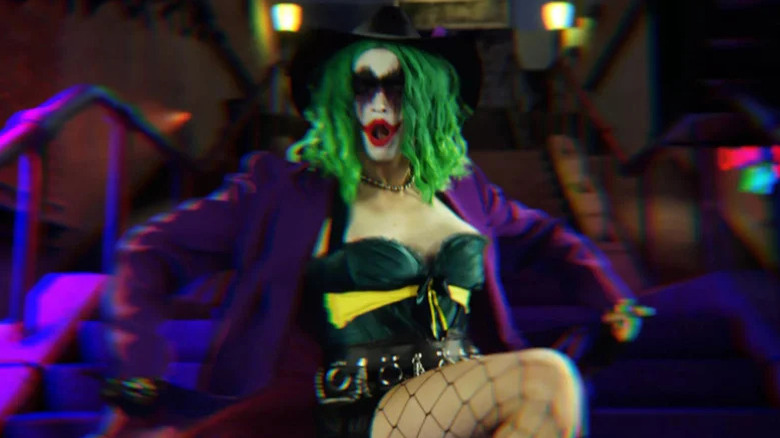12 2020s Films Destined To Become Cult Classics
Audience reception is a funny thing. Despite the millions of dollars Hollywood studios spend on market research, movies don't always resonate the way they were expected to. In some cases, films fizzle out because they're simply bad. In other instances, movies struggle to succeed because they were released at the wrong time, or their marketing strategy was poor, or they just didn't find their audience.
Such is the case for many films we now call cult classics. Though there's no set definition for the term, it generally refers to films that had poor box office showings or were overlooked in some way, but later garnered a passionate fan base, thus giving them new life. While cult films aren't necessarily defined by their content, they often include campy elements or diverge from mainstream sensibilities in some way. Because of this, the horror and science fiction genres have produced many cult films.
Cult films exist due to the passage of time — they become cult films only after the fact. They've become an important part of movie culture, and though it can be difficult to predict how a movie will land in the future, we've observed several characteristics that make a film more likely to achieve cult status. What follows is a list of recent movies that we believe will become cult classics down the line.
Bottoms
Emma Seligman's "Bottoms" could have been a comedic hit, but luck wasn't on its side when it was released in the summer of 2023. It premiered smack dab in the middle of the WGA and SAG strikes, limiting promotional efforts. Moreover, despite the inroads we've made in terms of LGBTQ representation, a sexually explicit teen lesbian comedy was (and is) a hard sell.
Though "Bottoms" did well considering the small number of screens it played on, the film's limited release constrained its reach. Though many queer women professed their devotion to the film before it even came out, MGM presumably lacked confidence that this fan base would bring in the big bucks. Of course, "Bottoms" doesn't only appeal to queer viewers, and its potential audience was likely larger than the studio assumed.
Though the odds were stacked against "Bottoms" in terms of commercial success, it's primed to achieve cult classic designation. In fact, "Bottoms" was inspired by another teen comedy that proves this point. Seligman has noted that she made the film with comedies like "Wet Hot American Summer" in mind. Though that raunchy comedy wasn't well-received when it came out in 2001, its popularity has continued to grow over the years. We suspect "Bottoms" will follow the same trajectory.
Madame Web
Films one might describe as "so bad, it's good" often have a better chance at becoming cult classics than those considered high-quality. "The Room," one of the most infamous cult films of all time, serves as a prime example of this apparent contradiction, and "Madame Web" has what it takes to follow in those footsteps.
You probably remember the meme-ification of "Madame Web" following the release of its trailer. Dakota Johnson's affectless reading of the clunky line "He was in the Amazon with my mom when she was researching spiders right before she died" instantly captured the attention of online jokesters and defined the "Madame Web" press tour. Although millions of people laughed at the memes, few bought tickets to see the movie, and it was a box office bomb.
We're not arguing that "Madame Web" will garner a critical reappraisal in the future, but rather that viewers will learn to recognize the film for what it is: an unintentional camp masterpiece. If you watch the film expecting a coherent plot or impressive acting, you will be disappointed. But if you watch "Madame Web" prepared for a ridiculous camp mess, you'll have a delightful time at the movies. It's this change in mindset that will allow "Madame Web" to become the cult classic it deserves to be.
Mad God
The definition of a passion project, Phil Tippett's "Mad God" has all the makings of a future cult film. Though far from a household name, Tippett is a Hollywood legend. As an animator and visual effects supervisor, Tippett worked on films like "Jurassic Park," "Star Wars" (he created Jabba the Hutt), and "RoboCop" (he animated the famous ED-209 stop-motion sequence). In between these projects, Tippett spent 30 years creating what would become "Mad God."
A stop-motion silent film, "Mad God" follows a figure known as the Assassin as he wanders through a hellish wasteland. With little plot to speak of, the film functions like a dream (or a nightmare), filled with terrifying monsters, disembowelment, and many bodily fluids. At one point, the Assassin "births" a deformed monster a lá "Eraserhead." Like that David Lynch film, "Mad God" was basically designed to become a cult classic — there's no way a film like this would ever achieve mainstream success.
Indeed, "Mad God" is the platonic ideal of a midnight movie, functioning not primarily as a movie with a message, but rather as a paean to the power of unchecked creativity. "Mad God" makes the perfect cult movie precisely because it's not meant for everyone, or even anyone. Those predisposed to enjoy the film will find it in their own time.
Cocaine Bear
"Cocaine Bear" was never intended to be a film that would garner serious reverence or critical acclaim. Consider the plot: In the 1980s, a drug smuggler drops a bag of cocaine out of an airplane. A black bear eats the drugs and gets high on cocaine. During his drug-addled rampage through the forest, the bear encounters a variety of characters, including a worried mother (Keri Russell) and two kids, a park ranger (Margo Martindale), a wildlife activist (Jesse Tyler Ferguson), and a drug kingpin (Ray Liotta). All manner of chaos ensues.
"Cocaine Bear" did okay at the box office, grossing almost $90 million worldwide, and it received average reviews from critics. The silly quality of the film and its middling reception make it an ideal candidate for becoming a cult movie. The image of esteemed character actress Margo Martindale in a Park Ranger outfit being brutally dragged behind a truck should be reason enough for the movie to reach icon status. How can you not love the concept of three different actors from "The Americans" fighting a coked-up bear?
To be fair, "Cocaine Bear" appears to be reaching for cult classic classification from the get-go, which can be a tricky proposition. Can you really plan cultification? Only time will tell, but we're betting "Cocaine Bear" has what it takes.
Better Man
"Better Man" has been perplexing viewers since its first trailer was released. A jukebox musical biopic, "Better Man" tells the story of English singer Robbie Williams, with one small liberty taken: Williams is not depicted as a man, but an anthropomorphic chimpanzee. Williams has suggested that he's played a chimp in the film because he sees himself as a "performing monkey." The odd choice was also a way to counteract the fact that many Americans have no idea who Robbie Williams is.
One of the biggest box office bombs ever, the absurd premise of "Better Man" didn't win over potential viewers. Improbably, though, it did win over some critics. The monkey-ness of it all works because the movie takes Williams the chimp seriously, and though it's a clever bit, it's not a joke. "Better Man" also doesn't shy away from portraying Williams' many flaws, portraying him as an often unlikable (though still sympathetic) protagonist.
Maybe it's actually a good movie, or maybe it's just bizarre enough to be memorable, but either way, "Better Man" presents a bold vision for a biopic, and that's precisely why it has a future as a cult classic. As our own Jacob Hall writes in his review, "Swings this insane deserve some kind of respect, and frankly, this is the kind of swing that earns my instant and undivided attention. And potential obsession." If more people get the chance to see the film, it may become their obsession, too.
Lisa Frankenstein
According to writer Diablo Cody, "Lisa Frankenstein" takes place in the same universe as "Jennifer's Body." Set in 1989, the film follows Lisa (Kathryn Newton), a teenage girl troubled by the murder of her mother two years ago. Lisa often hangs out at the local graveyard, and one evening, a deceased Victorian man (Cole Sprouse), whose grave Lisa frequents, comes back to life due to a lightning strike. Lisa and the Creature feel a kinship to one another and embark on a murderous rampage, collecting body parts as they go.
The film's connection to "Jennifer's Body" is significant. That 2009 movie was poorly received in its time, primarily due to bad marketing and a misunderstanding of what the movie was doing, but "Jennifer's Body" has since been reappraised as a feminist cult classic. "Lisa Frankenstein," which came out in 2024, didn't suffer from the same mismanagement, but it also didn't win over the critics.
It's true that "Lisa Frankenstein" relies heavily on imitation, referencing '80s classics throughout. And while this may appear derivative to some viewers, it's bound to delight others. Indeed, while the film's explicit reference to previous cult classics is a risky move, younger viewers still learning about these classics will have a different perspective. As new generations continue to (re)discover "Jennifer's Body," "Lisa Frankenstein" has a good chance of benefiting from this lineage, finding champions in the form of young fans.
I Saw the TV Glow
In a way, "I Saw the TV Glow" is a film about cult classics, though it tackles the concept of fandom in a completely novel fashion. Directed by Jane Schoenbrun, the movie begins in the 1990s and follows a lonely teenager named Owen (Justice Smith). A fellow outcast, Maddy (Jack Haven), introduces Owen to a teen show called "The Pink Opaque," heavily modeled after "Buffy the Vampire Slayer." Maddy is obsessed with the show, and Owen becomes a devoted fan. As the two friends grow up, Maddy's obsession grows and she begins to lose touch with reality, while Owen sinks further into his own isolation.
A metaphor (though not a straightforward one) for the intense relationship trans and queer folks have with pop culture and the abject horror of living a life without transitioning, "I Saw the TV Glow" is a masterwork that doesn't care to explain things to its viewers. While many trans critics and audiences found the film resonant with their own experiences, not everyone cracked the egg (itself a term for trans revelation) of its intense emotional substance, even as reviews trended positive.
Though it's light on story, "I Saw the TV Glow" is dense with meaning, and benefits from repeat viewings and analysis. Formally and textually subversive, it's not an "easy" film, but those who get it really get it. Schoenbrun understands the connection between fandom and identity better than most, and "I Saw the TV Glow" will no doubt continue to amass devotees for years to come.
Bodies Bodies Bodies
Rachel Sennott fans have been watching the actress rise the ranks in Hollywood since her iconic "It's L.A." video went viral several years ago. As she's become a notable name, her previous projects, such as "Shiva Baby" and, more recently, "Bottoms," have found new audiences. Sennott's fans have certainly watched her 2022 horror/comedy "Bodies Bodies Bodies," but it wasn't given the marketing push it needed to become a hit.
The film follows a group of friends staying at a mansion during a hurricane. Sennott plays Alice, an insufferable podcaster, there with her older Tinder boyfriend (Lee Pace). The other guests include stoner David (Pete Davidson), whose family owns the house, his girlfriend Emma (Chase Sui Wonders), Jordan (Myha'la), and Sophie (Amandla Stenberg) and her girlfriend Bee (Maria Bakalova). The group decides to play a mafia-type game called Bodies Bodies Bodies. What begins as a fun evening turns terrifying when the power goes out and real bodies start piling up.
"Bodies Bodies Bodies" has what it takes to become a generational cult classic, something in the vein of "Clue" for the 2020s. Exciting, hilarious, and only kind of scary, the film has major repeat viewing potential. The horror elements make it a great October watch, while its comedic side gives it a highly quotable quality. Perfect sleepover fodder, we're waiting for "Bodies Bodies Bodies" to assemble the cult following it deserves.
Malignant
It might seem odd to suggest that a new James Wan film is destined to become a cult classic. Isn't the "Saw" and "Insidious" director too big to direct a cult film at this point? "Malignant" proves that assumption wrong. The 2021 movie follows Madison Mitchell (Annabelle Wallis), a Seattle woman haunted by visions of people being murdered. She discovers that the murders are occurring in real life, and we learn of a terrifying figure known as Gabriel. Is Gabriel a demon? A spirit? A figment of Madison's imagination?
"Malignant" was bound to generate disagreement among viewers, but it's the final twist that divided the audience, separating them into two camps: the lovers and the haters. Is "Malignant" a good film? A bad film? That all depends on what you expect of it. The tone switches on a dime, going from serious to over the top in seconds, and the third act is so far-fetched you can't help but laugh.
Therein lies the issue: It's not clear how you're meant to respond to the film until near the end. The finale is campy to the highest degree, clueing the audience into the fact that they should have been laughing the whole time. The film benefits from repeat viewings, making it a prime candidate for cult film status. "Malignant" doesn't align with the elevated horror trend that's defined the last decade, but we're confident viewers will come to adore the film in due time.
Hundreds of Beavers
Cult classics often include films that go against the grain in some way, and "Hundreds of Beavers" goes against the grain in basically every way. The 2022 microbudget film follows Jean Kayak (Ryland Brickson Cole Tews), a 19th-century applejack salesman. When beavers destroy his orchard, Jean is left destitute. With no other means of survival, Jean becomes a fur trapper, hunting and killing beavers to sell to a local merchant (Doug Mancheski) in order to impress the merchant's daughter.
Oh, and there are a few other things you should know. It's a black and white film with almost no dialogue, telling the story through various grunts and mumbles as well as silent film-style intertitles. Due to its minuscule budget, much of the film was shot using green screens rather than on location. And, perhaps most importantly, the titular beavers are played by adults wearing furry beaver costumes.
The result is just as singular as it sounds, and the film delighted viewers who got the chance to see it. In fact, more people watched "Hundreds of Beavers" than expected. The filmmakers self-distributed the project, and it made over $1 million, an inspirational box office success story. It seems like only a matter of time before new audiences come across the film and hold it close to their hearts.
Barb and Star Go to Vista Del Mar
The COVID-19 pandemic upended the release strategy of so many films in 2020 and 2021, as movies scheduled to be released in theaters were relegated to streaming and struggled to find their audiences. Such was the case with "Barb and Star Go to Vista Del Mar," a 2021 comedy that didn't get the attention it deserved. Written by Kristen Wiig and Annie Mumolo, who also star, the film follows two friends who go on a rollicking vacation.
Middle-aged besties Barb (Mumolo) and Star (Wiig) live in Nebraska, and they're thrilled to take their first-ever vacation to Vista Del Mar, Florida. Barb and Star plan to make the most of all the activities offered to them at their luxury hotel, while attracting the attention of a sexy local, Edgar (Jamie Dornan). Unbeknownst to the friends, a deranged villain (also played by Wiig) is plotting to destroy the town.
There's no accounting for taste, and "Barb and Star Go to Vista Del Mar" won't tickle the funny bones of everyone who watches it. It's thoroughly silly and absurd, asking viewers to suspend disbelief for a couple of hours. However, we're confident that if more people saw it, the movie would gain the passionate fan base it deserves. Endlessly quotable and perfect for creating inside jokes with friends, those primed to enjoy the film will be unable to resist its pull.
The People's Joker
"The People's Joker" was never going to become a hit. Directed, written by, and starring Vera Drew, the film is a wildly original take on the superhero story. Drew plays a young trans woman who moves from Smallville to Gotham City to become a comedian. Forced to take a drug called Smylex when she was younger — literally putting a smile on her face — because she was depressed and struggling with gender dysphoria, she adopts the persona of the Joker.
The film skewers many powerful figures in pop culture, from Lorne Michaels to RuPaul, and brazenly mines DC's vault of characters in service of the alt-superhero tale. Unsurprisingly, the film ran into copyright issues following its premiere at TIFF, and Drew revealed that an unnamed corporation pressured her to halt its release. It eventually played in a limited number of theaters and found a group of fans in those lucky enough to see it.
A DIY project to its core, the low-budget film includes several different animation styles and rudimentary CGI to tell the story, uncaring of any jarring visual collisions. Despite the movie's biting satirical anarchy, "The People's Joker" ultimately tells a heartwarming story of self-actualization. Literally and figuratively a hard sell, the film is a cult classic through and through, even if it hasn't reached that level of notoriety quite yet.

